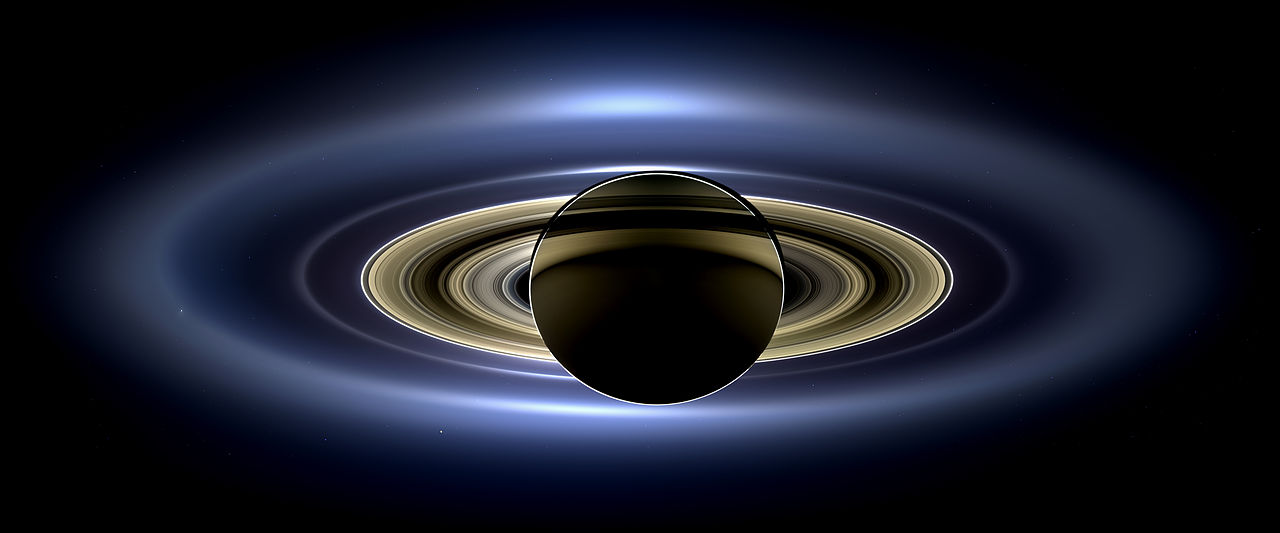The rings of Saturn are an amazing sight. They are so iconic that it is hard to imagine Saturn without its rings. But throughout most of Saturn’s history, it didn’t have rings. The rings are much younger than the planet itself, and we now have good evidence to prove it.
The estimated age of Saturn’s rings has varied over time. In the early days of its discovery, the rings were thought to be as old as the planet itself. But back then things were generally thought to be fairly timeless. The universe was thought to be static and the idea of planetary or lunar orbits drifting over time seemed far-fetched. Even the idea of Earth’s tectonic drift wasn’t accepted until the mid-1900s. The rings were just a part of the solar system, just like everything else.
But as we came to understand the complexities of orbital dynamics, we learned that many seemingly stable systems can be unstable. Resonances between planets cause them to shift over time, particularly in the early period of the solar system. So surely a complex ring system such as Saturn’s would experience complex perturbations. Between collisions and orbital drifts, Saturn’s rings couldn’t be more than a few million years old. So, it was thought, the rings were likely the result of a moon that drifted too close to Saturn and was torn apart by tidal forces, or perhaps the collision of two icy moons.
But the Pioneer and Voyager probes gave us a detailed view of Saturn’s rings. We found they were far more complex than we had imagined. We also saw that subtle interactions created stable resonances within the rings. Shepherd moons ensured that banded gaps within the rings remained stable, and ripples from minor asteroid impacts did not cause long-term instabilities. Even computer simulations showed that the rings could remain fairly stable for billions of years. Even initial data from the Cassini mission pointed to the rings being very old. And so the thought was that Saturn’s rings could have formed along with the planet.

But a new study published in Science Advances points to a young ring system. The study is based on micro meteors captured by Cassini’s Cosmic Dust Analyzer. Over its thirteen-year mission, the Cosmic Dust Analyzer detected millions of microscopic particles, most of which originated within the ring system. But when the team analyzed the speed and trajectory of the particles, they found 73 particles that definitively had an origin beyond Saturn and another 90 particles that were very likely exogenic. This doesn’t seem like much, but it allowed the team to calculate the rate at which particles enter the ring system.
From this, the team calculated the age of the rings. The rings are comprised of almost pure ice. Depending on the region considered, only about 0.1% to 2% of the rings are non-icy, and likely of exogenic origin. The older the rings, the higher that percentage should be. It’s similar to the way your apartment can get dusty over time if you don’t clean it. Given the rate at which particles enter the ring system, the team estimated that the rings are only about 100 – 400 million years old. That’s far younger than the 4.5 billion-year age of Saturn itself.
Reference: Kempf, Sascha, et al. “Micrometeoroid infall onto Saturn’s rings constrains their age to no more than a few hundred million years.” Science Advances 9.19 (2023): eadf8537.

